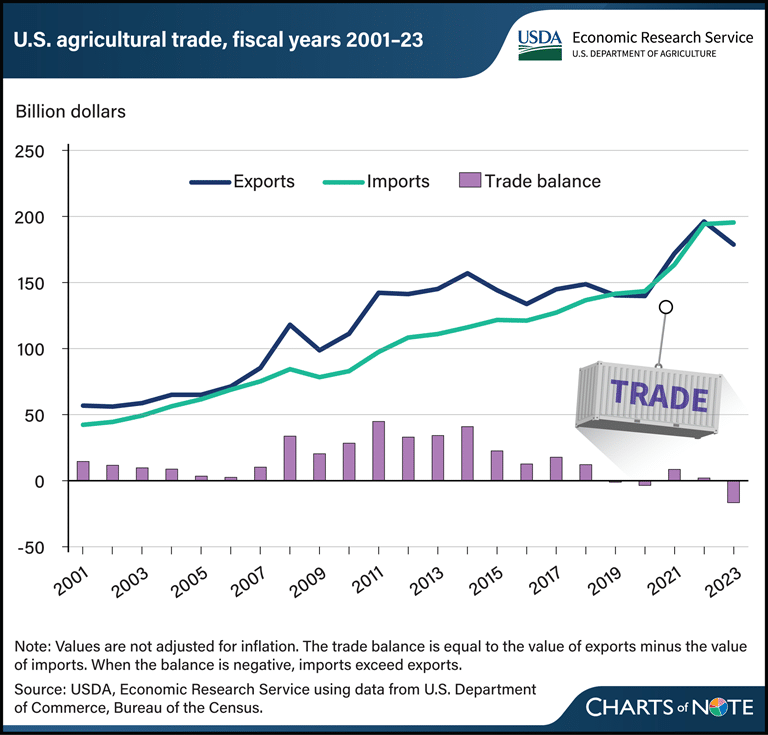Fiscal Year 2023 marks the third time in five years the U.S. agricultural trade balance has been in deficit.
For almost six decades, the United States maintained a surplus in its agricultural trade balance, but recent years have seen a notable shift. In fiscal year (FY) 2019, the balance turned to a deficit, a trend that has persisted in three out of the last five fiscal years. The U.S. Department of Agriculture Economic Research Service (USDA ERS) recently reported that in FY 2023, U.S. agricultural imports exceeded exports by $16.6 billion.
The USDA ERS suggests the change in the trade balance reflects evolving consumer preferences, a strong economy and the impact of the dollar’s strength, rather than a decline in export competitiveness or increased import dependence. The U.S. consumer’s growing appetite for high-valued imported goods, such as fruits, vegetables, alcoholic beverages and processed grain products, has played a significant role in the expanding trade deficit. These goods often include products that are not easily available domestically, such as tropical fruits or off-season produce.
In contrast, nearly 40 percent of U.S. agricultural exports are bulk commodities, whose prices are more closely tied to global market trends. The volatility in export values, compared to the relatively stable upward trend in import values, underscores the complexity of the agricultural trade balance dynamics.
As the United States imports more agricultural products, there may be a corresponding increase in the demand for seeds of crops that are not easily sourced domestically. This could present opportunities for seed companies to expand their offerings to meet the needs of U.S. growers.
The growing trade deficit could also lead to increased competition from foreign seed companies, as they look to capitalize on the U.S. market. U.S. seed companies will need to continue to focus on innovation and product differentiation to remain competitive in a changing landscape.
Sometimes trade imbalances lead to trade disputes and restrictions, which could potentially impact the ability of U.S. seed companies to access foreign markets. This highlights the importance of trade agreements and diplomacy to ensure a favorable environment for seed exports. The situation will also prompt U.S. seed companies to invest more in research and development to develop new seed varieties that are better suited to meet evolving needs.
Overall, the shift in the U.S. agricultural trade balance underscores the importance of adaptability and innovation for the U.S. seed industry to navigate changing global market dynamics.
These findings are highlighted in the USDA Economic Research Service report, “Selected Charts from Ag and Food Statistics: Charting the Essentials, 2024,” which provides insights into the evolving landscape of U.S. agricultural trade.
Note: The information and data mentioned in this news release are sourced from the USDA Economic Research Service report “Selected Charts from Ag and Food Statistics: Charting the Essentials, 2024.”













